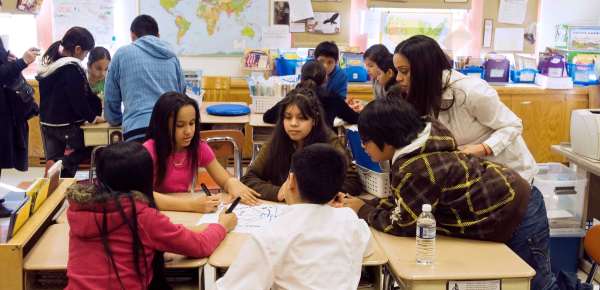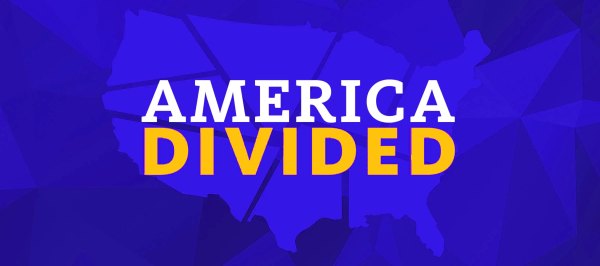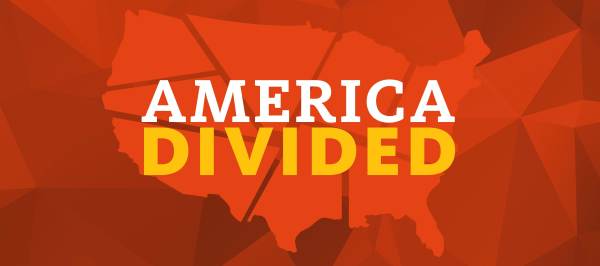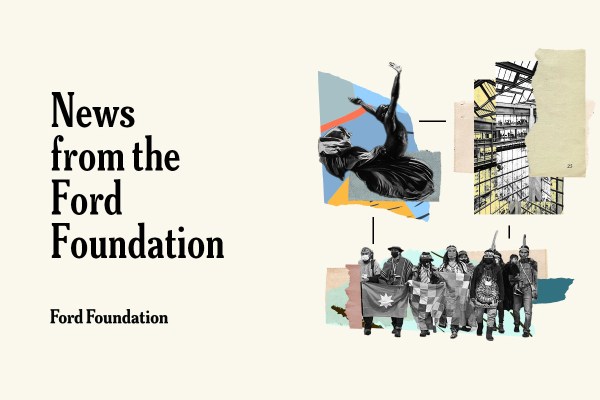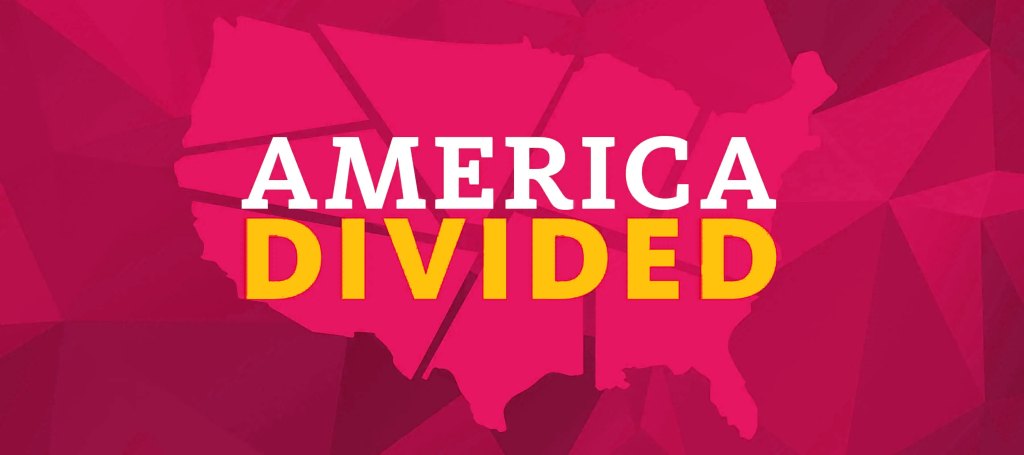
Each week, the Ford Foundation offers a social justice recap of the latest episode of America Divided—a docu-series about rising inequality in the United States. You can watch America Divided on Friday nights at 9 pm EST on EPIX and read last week’s episode recap here.
In tonight’s episode, we follow Jesse Williams as he dives deeper into the resegregation of American schools, uncovering how students of color are being criminalized. This week viewers are also introduced to actor America Ferrera, as she explores the plight of undocumented immigrants, and actor Peter Sarsgaard, as he works to understand the causes and impacts of the opioid epidemic.
The school-to-prison pipeline for black students
As actor Jesse Williams continues his look into the devastating effects of school segregation in St. Petersburg, Florida, he learns about a disturbing trend of students (who are disproportionately black) being arrested, physically handled by police, and burdened with criminal records for minor acts of teenage defiance.
The education system in St. Petersburg has created a school-to-prison pipeline for black youth: a cycle that begins in elementary school with excessive suspensions and expulsions and that escalates in high school, where students’ misbehavor is too often met with pepper spray, handcuffs, and arrest. These punitive practices put students in contact with the juvenile and criminal justice systems, which leads to their being criminalized for behavior that should be handled inside the school.
Sixty-four percent of US high schools now have uniformed police, called school resource officers (SROs), on duty, but the numbers are much higher in schools where much of the population is nonwhite, impoverished, or both. In St. Petersburg, SROs carry the same equipment as police officers on the street—Mace, a baton, and a gun—and make hundreds of in-school arrests a year. In fact, Pinellas County, where St. Petersburg is located, is ranked third in the state for disproportionately arresting black children—three times as many students are arrested for disorderly conduct there as in Miami, though Miami has three times as many students.
Williams speaks with Bob Dillinger, who leads a team of public defenders in the county, about how the school system is failing black students. Schools in the city have become a path to prison, with black students arrested for disorderly conduct when they knock over a garbage can, for battery when they bump into an administrator’s shoulder, and for criminal mischief when they write on a bathroom wall. After community outcry and demands for change, the school board fired principals in all five of the failing schools in the district, offering some hope to the community that their leaders will fulfill their promise to provide equal access to a quality education for all children.
The school-to-prison pipeline is a reality not only in St. Petersburg, Florida but also across the country. In her book Pushout: The Criminalization of Black Girls in Schools, social justice scholar Monique Morris (a Ford grantee) examines how punishing students—rather than dealing with the complicated problems that led to misbehavior in the first place—harms not only the students but also their peers, families, and communities. By embracing an approach centered on child development and restorative justice, educators can help tackle the root causes of conflict and mend the trust between youth and adults in schools—helping rather than abandoning our children.
Stripping immigrants of dignity and human rights
There are 11 million undocumented immigrants currently living in the United States. Actor and activist America Ferrera, the daughter of immigrants from Honduras, tries to understand what life is like for undocumented people once they arrive in the US. Many travel thousands of miles to flee countries like Honduras, Guatemala, and El Salvador, which have some of the highest murder rates in the world.
Once across the border, many enter the US through the Rio Grande Valley in Texas. Border checkpoints exist up to 100 miles inside the US border with Mexico, isolating immigrants in the Rio Grande Valley from proper medical care, job opportunities, and relatives. Those trying to get around the checkpoints meet an unforgiving journey through miles and miles of desert and rough terrain. Hundreds of men, women, and children trying to make a better life for themselves are found dead near these checkpoints each year.
Ferrera speaks to a woman with breast cancer who is trapped in the Rio Grande Valley, unable to receive treatment. She can’t afford high health care costs, and she is not eligible for Medicaid because she’s undocumented. Border checkpoints prevent her from leaving the Rio Grande Valley to go to Houston or Galveston, where there are more affordable health care options.
Organizations like LUPE are working to ensure a better life for undocumented immigrants living in the US. But what is really needed is a more humane immigration policy, one that values the dignity and potential of those trying to enter this country. The film Immigration Battle, supported by the Ford Foundation, examines the political roadblocks to immigration reform. Who Is Dayani Cristal?, also funded by Ford, highlights the deadly conditions migrants face on their journey to America.
The opioid epidemic and economic inequality
Actor Peter Sarsgaard examines the heroin crisis in Dayton, Ohio, which has become the center of the US opioid epidemic, with the highest number of overdoses in the country. Rooted in rising economic inequality and a lack of opportunity, the epidemic is hitting poor white men especially hard.
Princeton economists Angus Deaton, who won the 2015 Nobel Prize for economics, and Anne Case find that the steep rise in mortality rates for white Americans is caused by a shrinking middle class. Another Nobel prize-winning economist, Joseph Stiglitz, notes that as a middle-class lifestyle becomes increasingly out of reach for a growing share of Americans, many turn to drug abuse, alcoholism, and suicide.
In fact, drug overdoses are driving up the death rates of white Americans to levels that can be compared to what was seen in the AIDS epidemic of the 1980s. And not surprisingly, those already suffering because of poverty, joblessness, and inequality are more likely to be victims of the heroin epidemic. In Dayton in 2016, the number of deaths related to the opioid crisis is reaching record levels, and the uptick in drug use has led to increased violence and gun use. Sarsgaard visits Dayton’s Montgomery County Jail, where almost half the inmates have a heroin addiction, according to Sheriff Phil Plumber.
In Dayton, jail has become the default detox center—showing, again, how the US too often uses criminalization as a shortcut in efforts to solve complicated problems.
